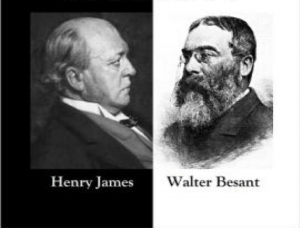Next week’s C19 is a joint session featuring two Ph.D students. It sounds fascinating, so please come along! Details below.
C19 Research Group
20th Feb, MB1019
Refreshments at 4pm, papers to begin at 4.15pm

Eleanor Bryan, University of Lincoln, ‘ “My Hideous Progeny”: Re-imagining Mary Shelley’s Frankenstein’
Since its initial publication in 1818, Mary Shelley’s Frankenstein has found itself subject to continual adaptation. It has been ceaselessly rewritten, reproduced, and redesigned over the subsequent two centuries to the point where there are now over eighty dramatic adaptations of the story and even more derivative films; tropes of which have become decidedly more fore-grounded in public consciousness than the original storyline. This paper concerns adaptations of Frankenstein, and looks to examine, from both a theoretical and historicist standpoint, the alterations made in the process of adapting the text. A Bakhtinian approach to adaptation will be assumed, in line with the theory that adaptive works do not silence or correct a previous work, but are rather informed by the original work and antecedent adaptations in order to establish a dialogue that extends in both directions.
Whilst the abundance of Frankenstein adaptations has prompted many studies on the differences between the novel and the films, scholarly research has neglected to examine the story’s transition from the original novel, to the nineteenth-century dramatizations, to the 1831 rewriting of the novel, to twentieth-century films. Rather than restrict analysis to one version of the novel and one medium of adaptation, this paper will approach the adaptations holistically in order to provide a new perspective in arguing that the nineteenth-century plays adapted from the 1818 novel shaped its 1831 rewriting and, ultimately, later cinematic adaptations. Significant deviations from Shelley’s storyline will be evaluated in terms of how they update the Frankenstein story for a more contemporary audience, and how their changes add to or detract from the societal concerns that Shelley originally aimed to emulate.
Eleanor Bryan is an Associate Lecturer on the Late Victorian to Edwardian Literature module and a PhD student studying Gothic adaptations. Her research primarily concerns dramatic adaptations of Frankenstein and Dracula; interrogating their propensity for adaptation, their enduring relevance, and the malleability of their characters in accurately transmuting changing social anxieties. Wider research interests include romanticism, fin de siècle literature, cinematic adaptation, and literary representations of monstrosity. Eleanor is active in the dissemination of her research, presenting her work at many national and international conferences, and last year she was awarded the Stephen Copley research award by the British Association for Romantic Studies.

Carly Stevenson, University of Sheffield, ‘Looking in Keats’s Lamia’
John Keats’s 1819 narrative poem Lamia is concerned with ways of looking: it begins with Hermes’s ‘amorous’ quest to find a hidden nymph and ends with Lamia’s retreat from the ‘watching eyes’ of Apollonius. Not only is Hermes the agent of Lamia’s metamorphosis from snake to woman, he is the conduit through which the reader’s gaze is mediated. Moreover, the bodily autonomy Lamia gains from her bargain with Hermes (she reveals the nymph to him in exchange for the restoration of her woman’s form) is short-lived, as she cannot disguise her true ‘gordian’ appearance from Apollonius. In this paper, I will explore the ways in which Keats reimagines the figure of the Lamia, and, in doing so, interrogates the femme fatale motif that was gaining currency during the eighteenth and nineteenth centuries, accelerated by the publication of Gothic texts such as Matthew Lewis’s The Monk (1796) and Coleridge’s Christabel (1816). By focusing on the power of seeing in Lamia, Keats acknowledges a ‘knotty problem’ at the root of the Gothic-Romantic obsession with transgressive female figures.
Carly Stevenson is a PhD student in the School of English at the University of Sheffield, under the supervision of Prof. Angela Wright and Prof. Andrew Smith. Her research is concerned with John Keats and the Gothic Aesthetic. Before joining the PhD programme at Sheffield, Carly completed both her undergraduate and Masters Degrees at the University of Lincoln.




